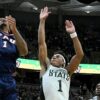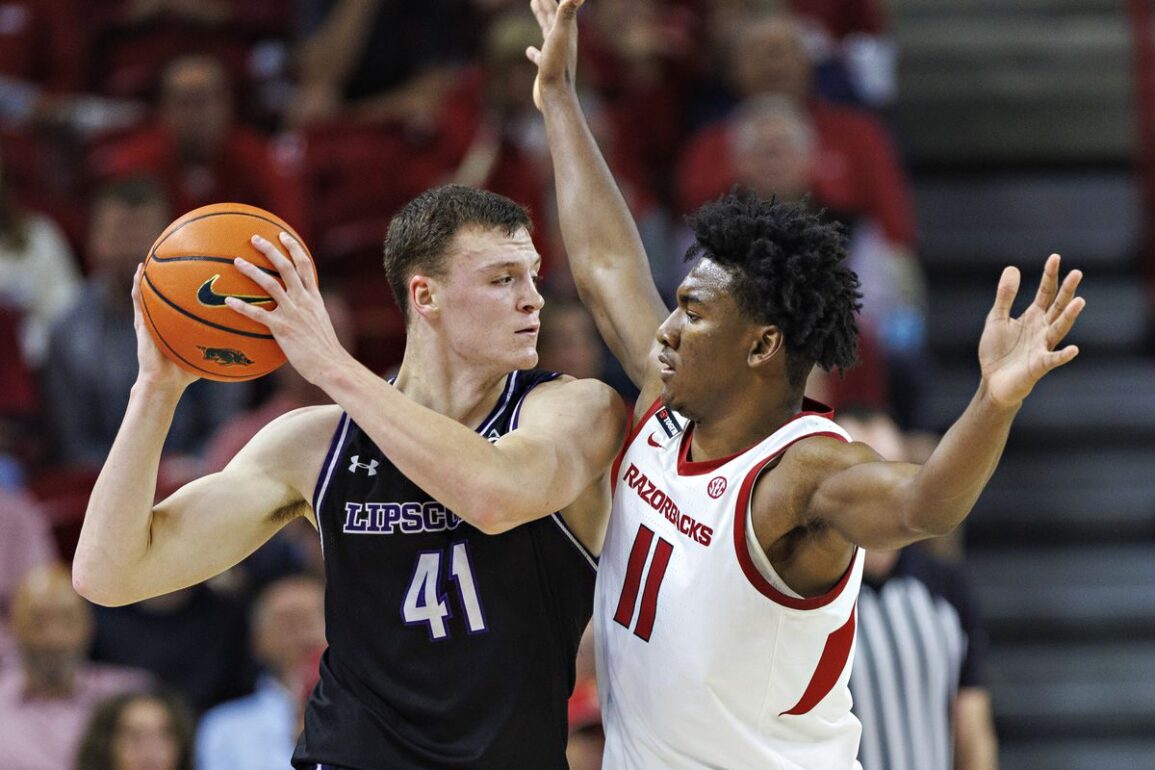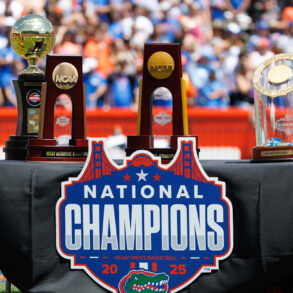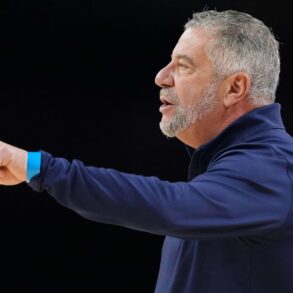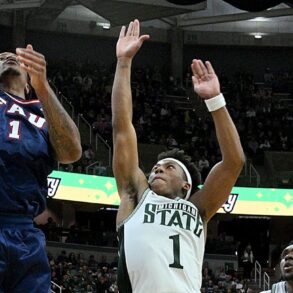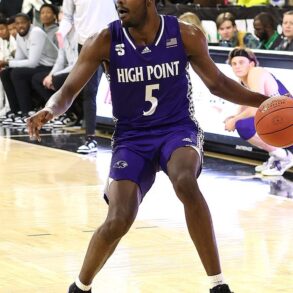Trying to figure out whether a player will pan out in the transfer portal is an incredibly difficult task. Player performance is based so heavily on the system they’re playing in, who their teammates are, and the level of competition they’re facing. All of those things change when they transfer which makes guesswork extremely volatile.
Last year I wrote a piece trying to determine the best historical comparisons for Great Osobor. A look at what previous big men transfers have done when moving up a level concluded that Osobor would likely see a drop in his numbers and that similar players in the past went from averaging 17.3 pts and 8.4 reb at their previous stop to 14.7 pts and 6.3 reb after. What actually happened for Osobor? He went from 17.7 pts and 9.0 reb to 14.8 pts and 8.0 reb. Pretty good job on my part if I do say so myself.
With UW once again turning over almost the whole team via the portal, let’s go ahead and do the same exercise for all of UW’s transfers so far. I want to admit up front this got trickier because my internal database I keep has been using Synergy Sports individual points per possession data. They discontinued that service for individual users this year so I don’t have the totals for the UW transfers’ performances this year. But I’ll do the best I can with other data sources.
Today we’ll start with Quimari Peterson and Jacob Ogancevic.
East Tennessee State PG Quimari Peterson- 6’1, 190 lb
For both Peterson and Ognacevic upcoming, I wanted to specifically look at players that came from similar competition levels. Both of them won conference player of the year awards in a conference that got a single auto-bid but Peterson’s road was tougher. According to KenPom, the SoCon was the 13th ranked conference out of 31 total. Over half of the SoCon finished in the top-150 at KenPom (6/10) but there were also 2 teams at 346 or lower who were among the dregs in all of D-1.
I decided to first look at recent players who have transferred up from the SoCon to the power conference level regardless of position. I went through the last 5 years to see any player who finished in the top-5 in KenPom’s Conference PotY algorithm that transferred up (Peterson was #1 for 2025).
There were a total of 7 players during that time who met the criteria. They scored an average of 17.6 points per game while in the SoCon. Peterson was a little above that mark at 19.5 ppg. Those players had an average BPR of +3.35 which is an all-in-one stat from evanmiya.com and they played an average of 1,495 possessions. Although it’s worth noting that 2 of those came in the 2020-21 season which were partially affected by Covid cancellations still which meant there were fewer total possessions available for them.
What happened at their new schools? Their average scoring went down to 7.1 points per game, a BPR of +3.13, and they played an average of 1,034 possessions. That’s a drop to 40% of the scoring, 93% of the BPR, and 69% of the playing time. Unsurprisingly, playing on a more competitive team meant that playing time went down but having better teammates meant scoring dropped even more than minutes as usage rate plummeted. BPR is a rate stat that isn’t dependent on volume so it makes sense it didn’t drop all that much.
If we applied all of that to Peterson it means he would score 7.9 points per game playing 1220 possessions with a BPR of +2.85. If you need some context based on Washington last season that is roughly equivalent to DJ Davis’ scoring totals, Mekhi Mason’s playing time, and somewhere between Zoom Diallo and Great Osobor’s impact while on the court. I think most Husky fans would probably take that right now although I’m sure many would like to see him score more given the 19.5 ppg this year.
There were only three of the players in the sample who could be considered guards. Let’s take a slightly closer look at just them.
- Malachi Smith went from Chattanooga to Gonzaga after averaging 19.9 points, 6.7 rebounds, and 3.0 assists per game on 40.3% 3-point shooting (the only player in the sample who scored more than Peterson). He excelled with the Bulldogs in Spokane as their 6th man averaging 8.7 points per game while leading the country at 50.6% 3-point shooting.
- Storm Murphy followed his head coach from Wofford to Virginia Tech after averaging 17.8 points and 4.3 assists per game on 40.4% 3-point shooting. He started every game at PG for Virginia Tech and averaged 8.0 points and 2.9 assists per game on 35.8% 3-point shooting.
- JP Pegues transferred from Furman to Auburn after averaging 18.4 points and 4.8 assists on 35.8% 3-point shooting. It turned out Pegues couldn’t beat out Auburn’s 5-star freshman PG or their returning starter combo guard and he never made the rotation for a team that was the #1 overall seed in the NCAA tournament this year. He averaged just 1.4 points per game.
That grouping doesn’t really tell us a whole lot. Two of the three went to teams that finished in the top-8 overall at KenPom that year. That’s nice and we’d love to see it become 3 of 4. One of them was the 6th man and the other was technically the backup point guard but never played because Auburn just moved their starting SG to PG whenever their starter left the game. The other started every game but saw his scoring dip a little more than in half and his 3-point shooting go down 5 percentage points.
Put it all together and I think that expecting a stat line in the neighborhood of 9 points and 3 assists per game on 36% 3-point shooting seems like a reasonable expectation for Peterson based purely on the historical comps.
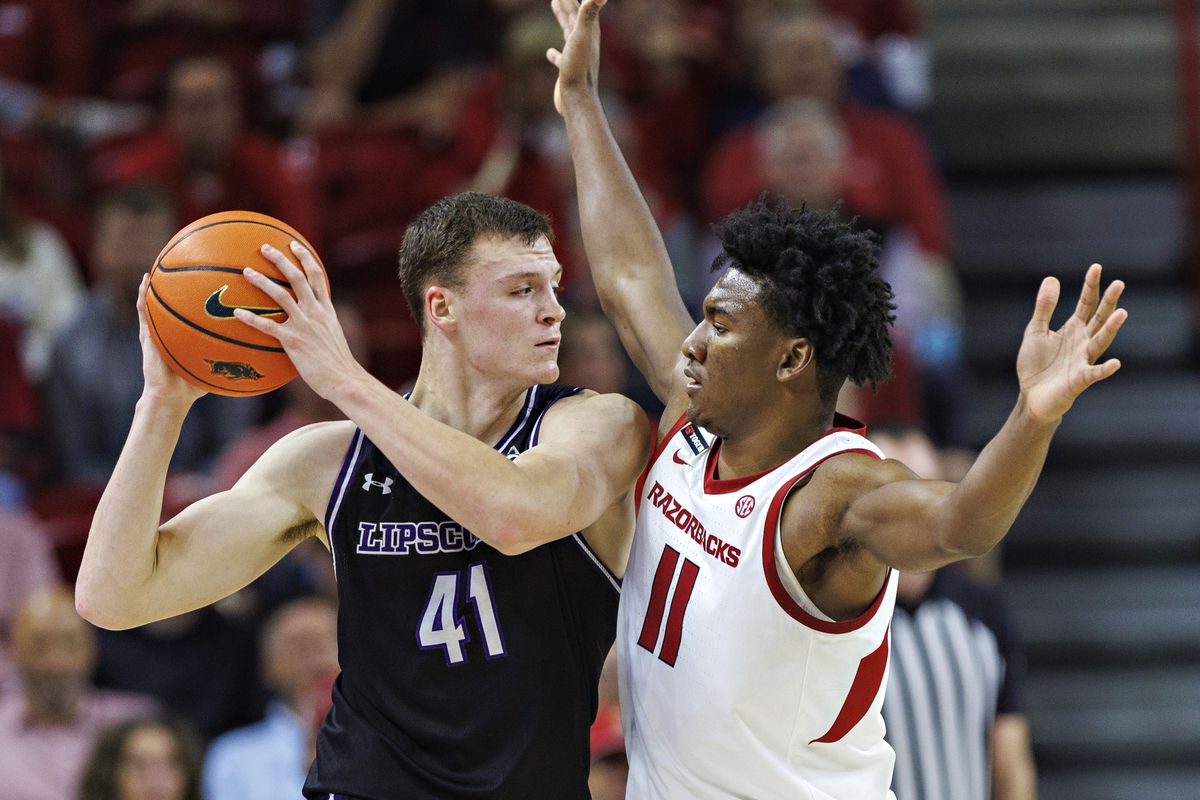
Photo by Wesley Hitt/Getty Images
Lipscomb F Jacob Ognacevic- 6’8, 220 lb
I wanted to do the same exercise for Ognacevic that we just did for Peterson. There’s only one problem… Only 2 players to finish in the KenPom top-5 of the Atlantic Sun PotY algorithm over the last 5 years have transferred to a power conference team afterwards.
Kind of shocking but it reflects that the ASun is in general a much worse conference than the SoCon and those players just aren’t as valuable to high major teams. This year the ASun was 24th of 31 at KenPom with the difference between it and the SoCon the same as between the SoCon and the Atlantic 10.
Neither of the two players fit the profile of Ognacevic as both are guard/wing types but we’ll go ahead and look at them both anyways. Spoiler alert: they had very different outcomes.
- Chaz Lanier won the ASun PotY in 2024 at North Florida then transferred to Tennessee after averaging 19.7 points and 4.8 rebounds per game on 43.4% 3-point shooting. It turns out he had absolutely no problem moving several rungs up the ladder. Lanier led Tennessee in scoring this year at 18 points per game on 39.5% 3-point shooting and actually took a higher % of his team’s shots while playing for a #2 seed in perhaps the hardest conference ever. His BPR rose from +0.55 (thanks to a negative defensive rating) to +4.7 at Tennessee.
- Meanwhile, Jalen Blackmon in 2024 averaged 21.3 points per game on 36.2% 3-point shooting at Stetson before transferring to Miami. The Hurricanes were the worst team in the ACC this year and Blackmon played 18.2 minutes per game before missing the last third of the season due to injury. He averaged 6.9 points per game on 32.4% 3-point shooting. His BPR still rose though from +1.0 to +2.26.
That’s as divergent as it gets. One player became a borderline All-American. The other was a part-time starter on a 7-24 in a very down ACC. Hard to learn much from that.
Let’s try broadening the pool. Instead of looking at exclusively ASun players, we’ll look for PF upperclassmen transferring from a single bid league (could be better or worse competition than the ASun) who were unrated out of high school in the 247 Sports Composite and averaged better than 1.0 points per possession over 450+ possessions on offense. Those are all marks I feel comfortable saying that Ognacevic hit even without the complete Synergy data.
From 2022 through 2024 there were 6 such players. The most notable names of that group are Kevin Obanor (Oral Roberts to Texas Tech) and Grant Nelson (North Dakota State to Alabama).
The average stat line in their last year at their previous school was 17.8 points, 8.0 rebounds, 0.8 blocks on 57.5% eFG and 32.4% 3-point shooting. Pretty close to Ognacevic. That dropped to 11.2 points, 5.4 rebounds, 0.6 blocks on 53.5% eFG and 29.3% 3-point shooting.
This past season Ognacevic was at 20.0 points, 8.0 rebounds, 0.4 blocks, 63.3% eFG and 40.2% 3-point shooting. He was the best 3-point shooter and thus most efficient offensive player in the sample but was the 2nd worst rim protector. If you apply the same percentage reduction to Ogancevic’s numbers then he ends up with the following stat line at UW: 12.6 points, 5.4 rebounds, 0.3 blocks on 58.9% eFG and 36.4% 3-point shooting.
Those are pretty solid numbers that I think Coach Sprinkle would probably sign up for right now. It’s worth noting that everyone involved in any of these samples played at least 18 minutes per game so it is almost a lock that Ognacevic should be considered at worst a heavy rotation player.
*****
We’ll be back later to look at the rest of UW’s transfer pickups which right now also includes rising sophomores G Wesley Yates III from USC and PF/C Lathan Sommerville from Rutgers.
This post was originally published on this site be sure to check out more of their content.




